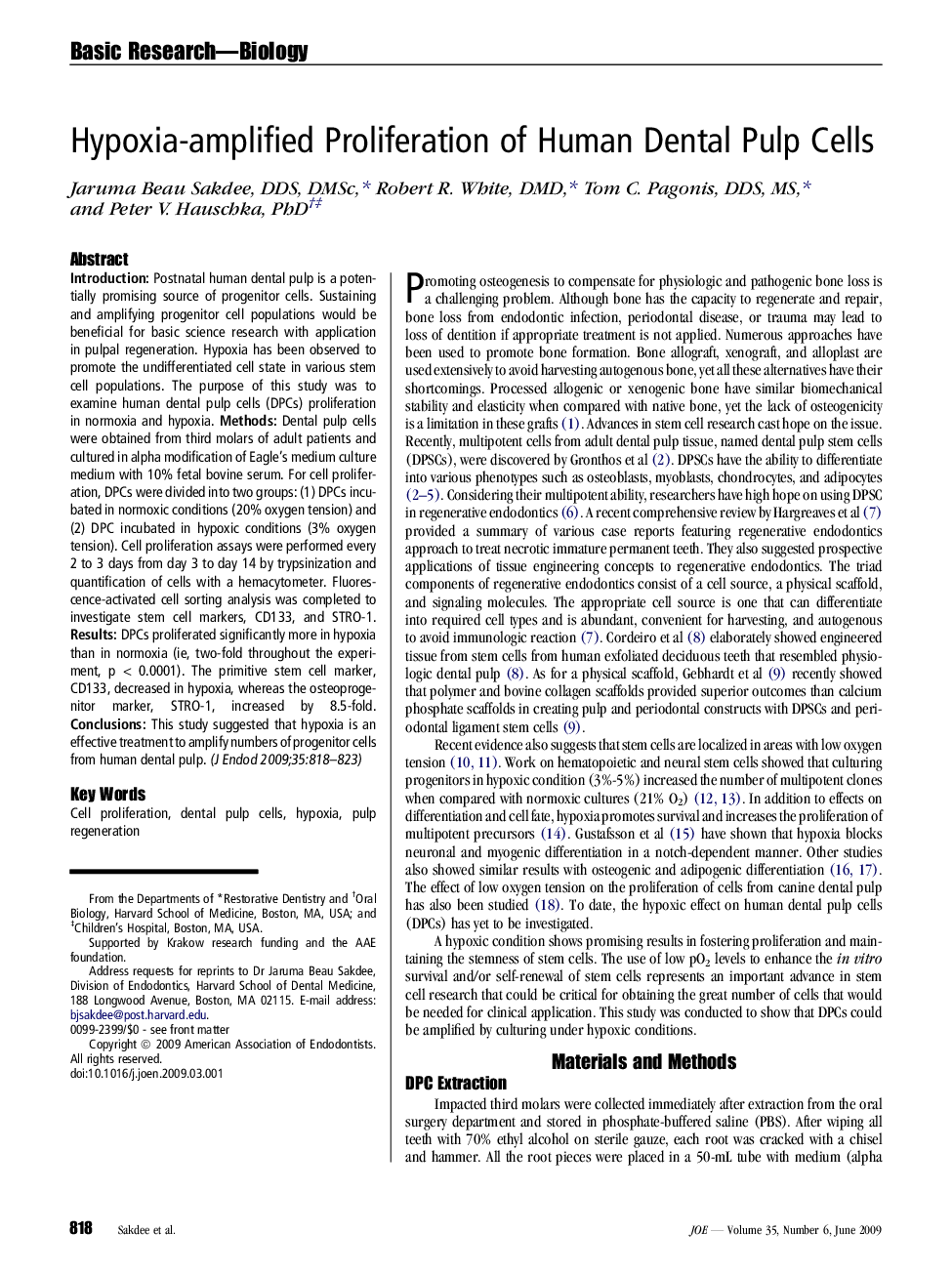| Article ID | Journal | Published Year | Pages | File Type |
|---|---|---|---|---|
| 3149557 | Journal of Endodontics | 2009 | 6 Pages |
IntroductionPostnatal human dental pulp is a potentially promising source of progenitor cells. Sustaining and amplifying progenitor cell populations would be beneficial for basic science research with application in pulpal regeneration. Hypoxia has been observed to promote the undifferentiated cell state in various stem cell populations. The purpose of this study was to examine human dental pulp cells (DPCs) proliferation in normoxia and hypoxia.MethodsDental pulp cells were obtained from third molars of adult patients and cultured in alpha modification of Eagle's medium culture medium with 10% fetal bovine serum. For cell proliferation, DPCs were divided into two groups: (1) DPCs incubated in normoxic conditions (20% oxygen tension) and (2) DPC incubated in hypoxic conditions (3% oxygen tension). Cell proliferation assays were performed every 2 to 3 days from day 3 to day 14 by trypsinization and quantification of cells with a hemacytometer. Fluorescence-activated cell sorting analysis was completed to investigate stem cell markers, CD133, and STRO-1.ResultsDPCs proliferated significantly more in hypoxia than in normoxia (ie, two-fold throughout the experiment, p < 0.0001). The primitive stem cell marker, CD133, decreased in hypoxia, whereas the osteoprogenitor marker, STRO-1, increased by 8.5-fold.ConclusionsThis study suggested that hypoxia is an effective treatment to amplify numbers of progenitor cells from human dental pulp.
